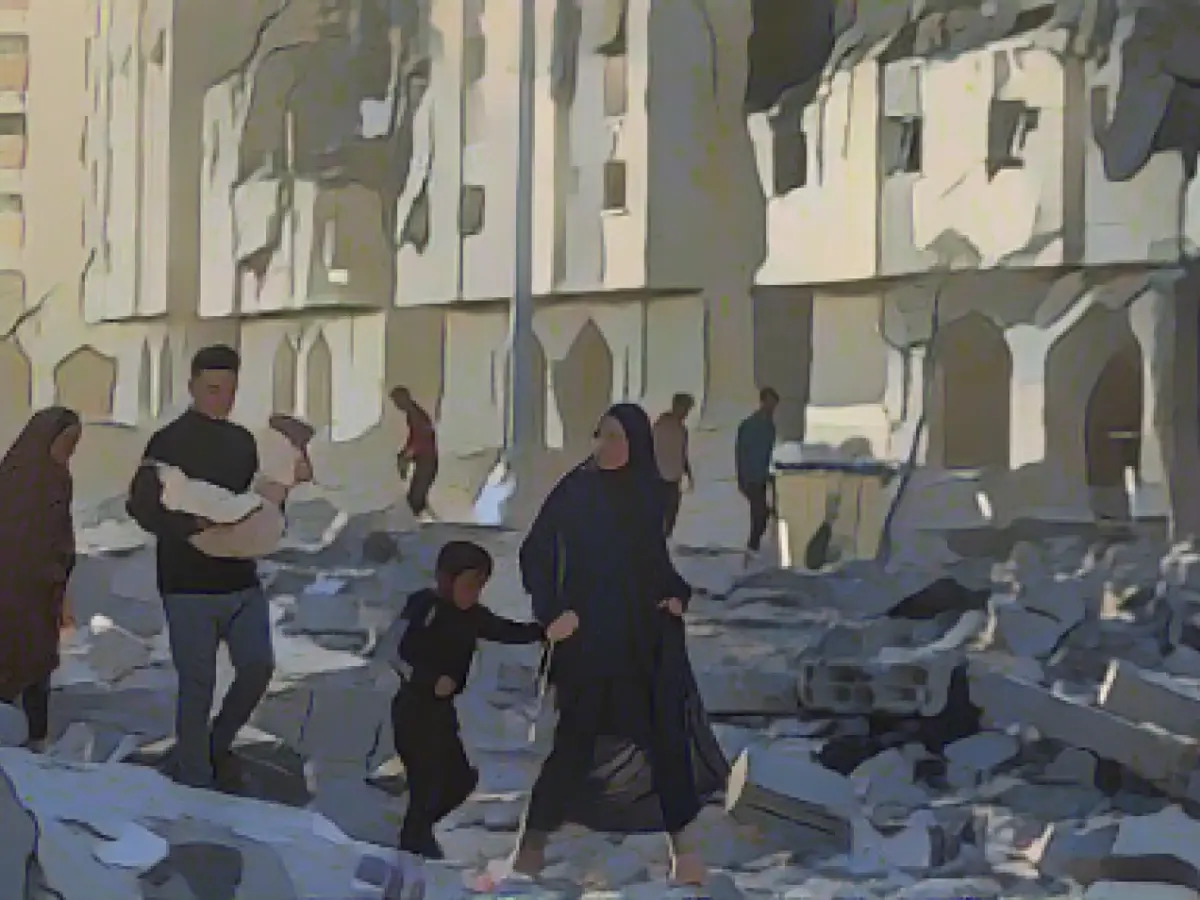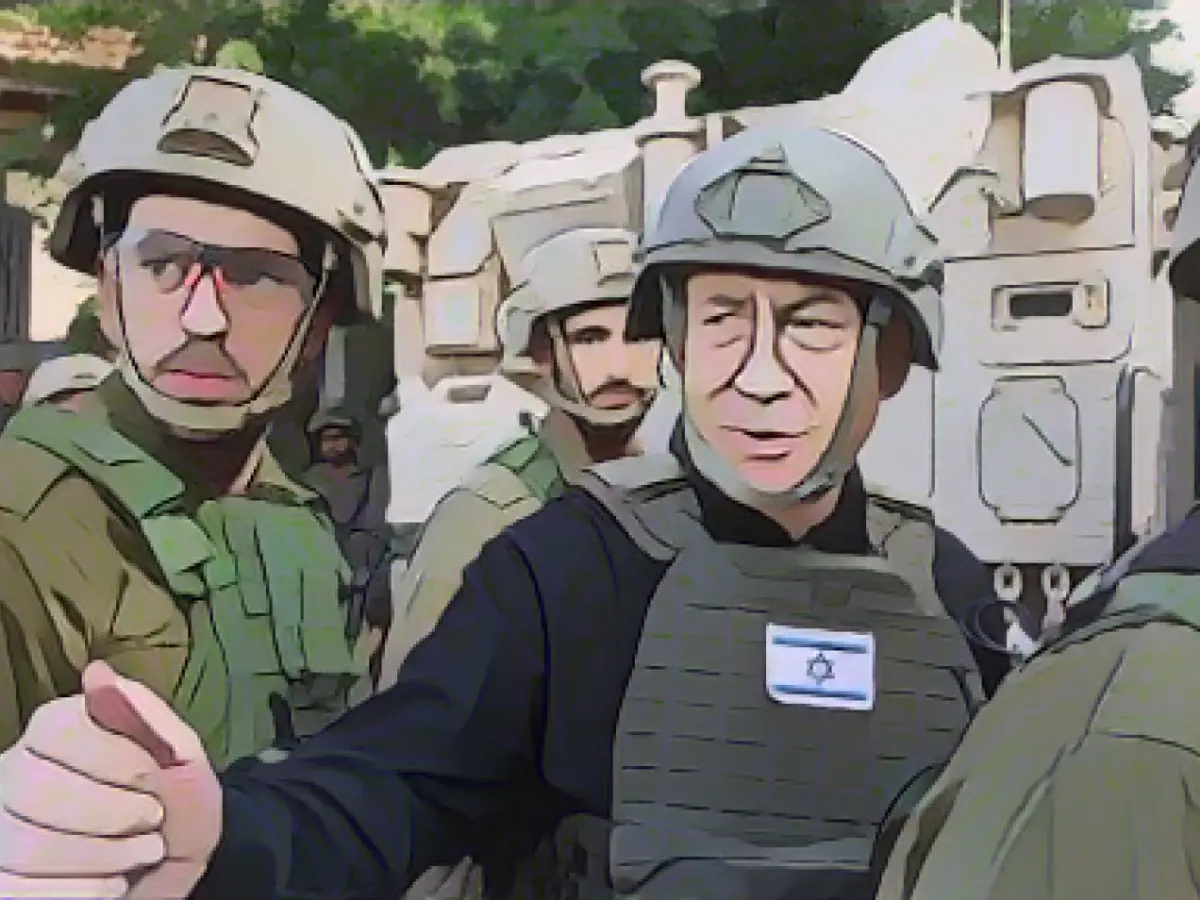Situation in the Middle East - Israel's relentless pursuit of "total victory" in Gaza
As Israeli forces mercilessly bombard the densely populated Gaza Strip, the grim prospects of a ceasefire loom large. The sirens wailed once more in southern Israel, according to the military, despite urgent warnings from the U.S. administration to protect civilians in the region. Overlooking these pleas, Israel targeted various sites in the south of the Gaza Strip, where hundreds of thousands of Palestinians who had fled from the north are now crammed into a minuscule area, evidently trying to escape the relentless shelling.
Netanyahu's never-ending war cry
Prime Minister Benjamin Netanyahu roared that Israel's war against Hamas would continue "until the end" and until "total victory" over the terrorist organization. He left no room for doubt on Saturday evening, insisting that ground operations were the sole solution to dismantling Hamas. Troops had already been deployed in the northern region, while the Israeli army launched an aerial barrage in the southern area on Saturday, bombing more than 50 targets in the vicinity of Chan Junis alone.
The humanitarian toll mounts
Regardless, 100 trucks carrying urgently needed aid supplies successfully reached the Gaza Strip on the same day. The Hamas-controlled health authority reported that approximately 220 people had lost their lives since the resumption of hostilities at the end of the ceasefire, with the death toll reaching over 15,000 since the commencement of the war on October 7. Notwithstanding, the figures remained unverified.
USA's plea to side with reason
U.S. Secretary of Defense Lloyd Austin urged Israel to prioritize the protection of civilians, stressing that it was both a moral and strategic obligation. Furthermore, U.S. Vice President Kamala Harris was unusually forthright in her comments on the side of the Dubai climate conference, stating that the high number of civilian casualties was "devastating."
However, the prospect of a new ceasefire seems dim. Hamas has made it clear that they will only engage in further hostage negotiations post-conflict in Gaza. Saleh al-Aruri, a Hamas leader, announced on Saturday that men who had served in the military or served as soldiers were among the remaining hostages. In contrast, Israeli Defense Minister Joav Galant asserted that 15 women and two children still remained in Hamas custody. Israel estimated 137 hostages in total still being held captive in the coastal strip.
Negotiations at a standstill in Qatar
Israel reported that the negotiations with Qatar over a renewed ceasefire were at an impasse. As a result, head of Israeli intelligence service Mossad David Barnea announced that his negotiating team would return to Israel. In the meantime, Britain announced its commitment to aiding Israel in locating the hostages, by conducting unarmed surveillance flights in the eastern Mediterranean and searching the airspace above Israel and Gaza.
Rocket strikes in Tel Aviv
The volatile situation in the Middle East continued unabated, with another rocket alert in the Israeli coastal metropolis of Tel Aviv. Hamas claimed responsibility for the attacks, where several muffled explosions were reported in the city center.
French President Emmanuel Macron expressed skepticism over Israel's objectives of completely dismantling Hamas, suggesting that such a task would be lengthy and possibly impossible. Macron also criticized the continued bombardment in the Gaza Strip, stating that the real fight against terrorism wasn't through systematic and permanent bombing. He, like Harris, called for an immediate ceasefire.
Israel seeks a buffer zone on the Gaza border
In response to the ongoing conflicts, Benny Gantz, Israel's alternate Prime Minister, advocated for the establishment of a buffer zone on the Gaza border. Mark Regev, the security advisor to the Israeli government, stated in Tel Aviv on Saturday that such a buffer zone would prevent Hamas operatives from breaching the border and attacking civilians.
The latest round of violence in Gaza was triggered by a horrifying massacre in Israel by terrorists from the Gaza Strip, on October 7, resulting in over 1200 fatalities and roughly 240 captives. Subsequently, Israel launched massive air strikes, a blockade of the coastal area, and initiated a ground offensive at the end of October.
The humanitarian situation in Gaza is worsening, with Hamas calling for worldwide support demonstrations. As the conflicts persist, leaders from around the globe, including Macron and Harris, continue to demand a peaceful resolution to the ongoing conflicts in the Middle East.
Sources:
Enrichment Data:
- The ongoing conflict between Israel and Hamas in Gaza has resulted in significant civilian casualties and calls for a ceasefire.
- The UN has estimated that more than 100 people have been killed in the latest round of violence in Gaza, with many victims being women and children.
- Israel and Hamas continue to trade accusations of war crimes, with both sides blaming the other for the escalating violence.
- The European Union has called for an immediate ceasefire, urging both sides to refrain from further violence and respect international humanitarian law.
- The U.S. has also expressed its concern over the situation in Gaza, with Secretary of State Antony Blinken calling for a "durable and sustainable" ceasefire.
Insights:
- The violence in Gaza has resulted in widespread destruction and displacement, with many Palestinians forced to seek refuge in UN-run shelters.
- The Israel Defense Forces have been using highly advanced weaponry in the conflict, including F-35 fighter jets and Iron Dome missile defense systems.
- Israel has imposed stringent restrictions on the movement of goods and people into and out of Gaza, citing security concerns.
- Hamas has reaffirmed its commitment to resisting Israeli occupation and defending Palestinian territories, with its armed wing, the Al-Qassam Brigades, launching hundreds of rockets at Israeli cities in response to the IDF's attacks.
- The international community has condemned the use of civilian infrastructure, including schools and hospitals, as military targets during the conflict.








